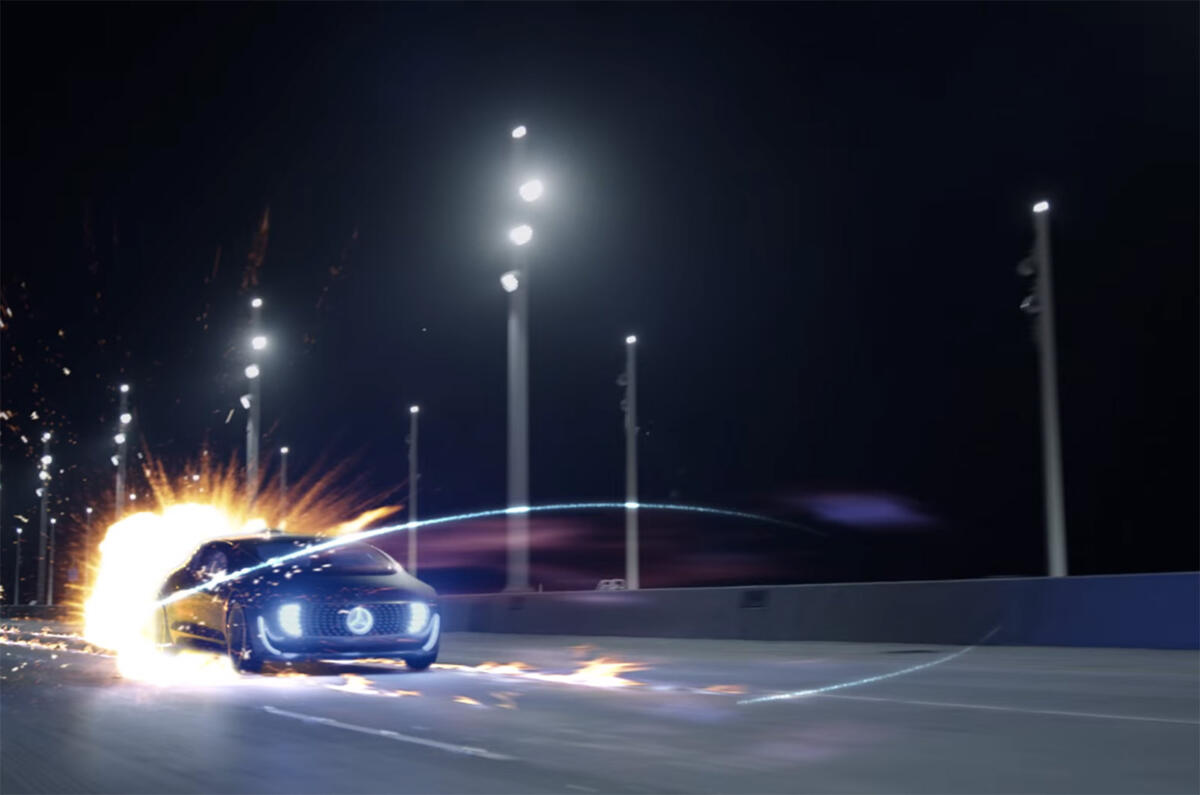Back to the Future Day is scheduled for 21 October. If you're not aware of the significance of this date, it's the day to which Marty McFly and Doc Brown travelled from 1985 in their DeLorean time machine in the second film of the Back to the Future trilogy.
For film buffs and sci-fi fans, this is big news. Events to mark the date are scheduled to take place around the UK, and car manufacturers are helping to celebrate the day by offering their own glimpses into the future. I'm always impressed by the creative ways in which car makers get involved in events like this, and especially so in annual events like April Fool's Day (who can forget Mini's 'fuelled by tea' Cooper from 2014?).
Mercedes-Benz has released a series of films featuring its F015 Luxury in Motion concept car. The four-door autonomous prototype - which is billed as Mercedes' vision of a luxurious future vehicle - is powered by two electric motors fed by a hydrogen fuel cell. Most radical, though, is the concept's interior, which features screens instead of windows - meaning passengers can choose what they see of the outside world.
Toyota, meanwhile, has reunited the stars of the film, Christopher Lloyd and Michael J. Fox, to see how many of the film's predictions on how the future would look have come true. While many of BTTF's predictions for the future - which included self-lacing shoes and flying cars - haven't materialised, Toyota is pitching its new hydrogen-powered Mirai as being the next step in automotive technology.
One of the film's featured modes of transport was a hoverboard that was capable of gliding on water - something which Toyota's sister brand, Lexus, recently made a reality. Lexus's own hoverboard works through magnetic levitation and can only 'hover' on specially constructed pieces of track. The opposing magnetic fields of the track and the board - which uses liquid nitrogen to cool its superconductor blocks - allow the board to levitate.
Of course, the real star of the Back to the Future films was the iconic DeLorean DMC-12, but while the film's DeLorean was converted to run on recycled waste, the real-life car used a 3.0-litre petrol V6.
A return for the DeLorean brand has been mooted several times over the past few years. The most recent planned revival, in 2011, centred around an all-electric version of the DMC-12. The company apparently built a working prototype of the car - dubbed DMCev - but the project has since been dormant.






Join the debate
Add your comment
As in Beastie Boys idea is...
Any chance you can post the original road test for the DeLorean?
Brilliant Idea!
The country, Turkie,